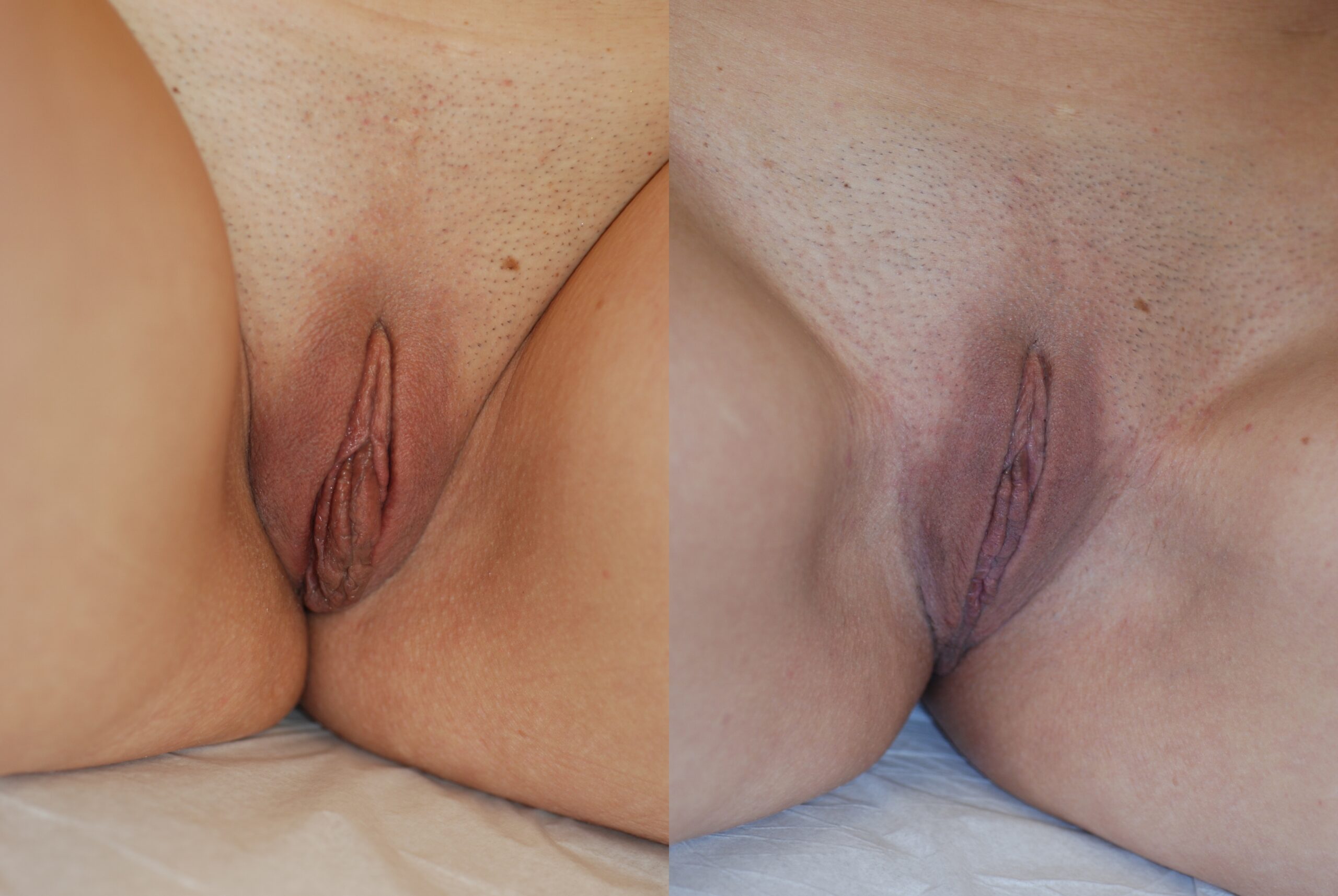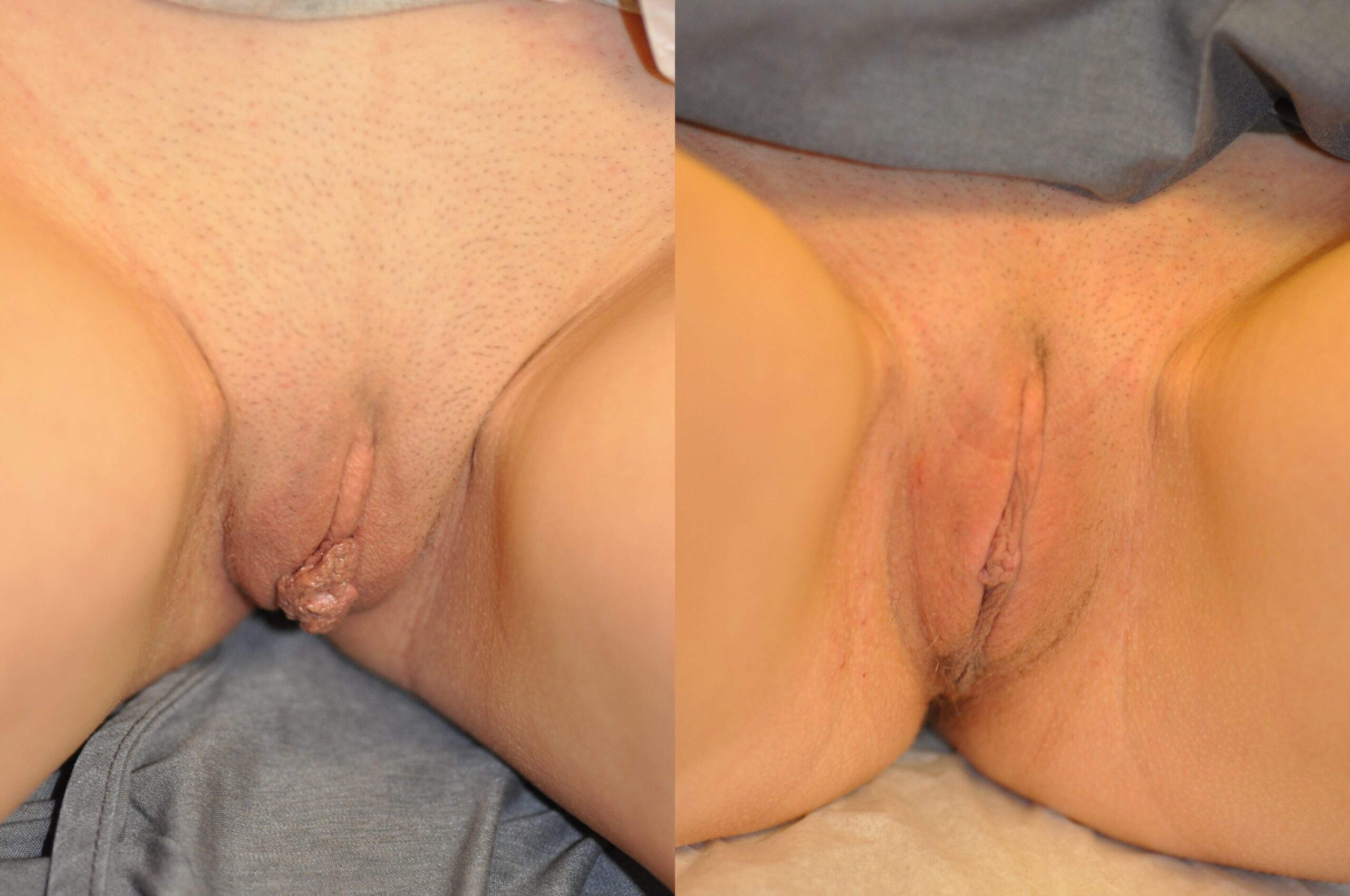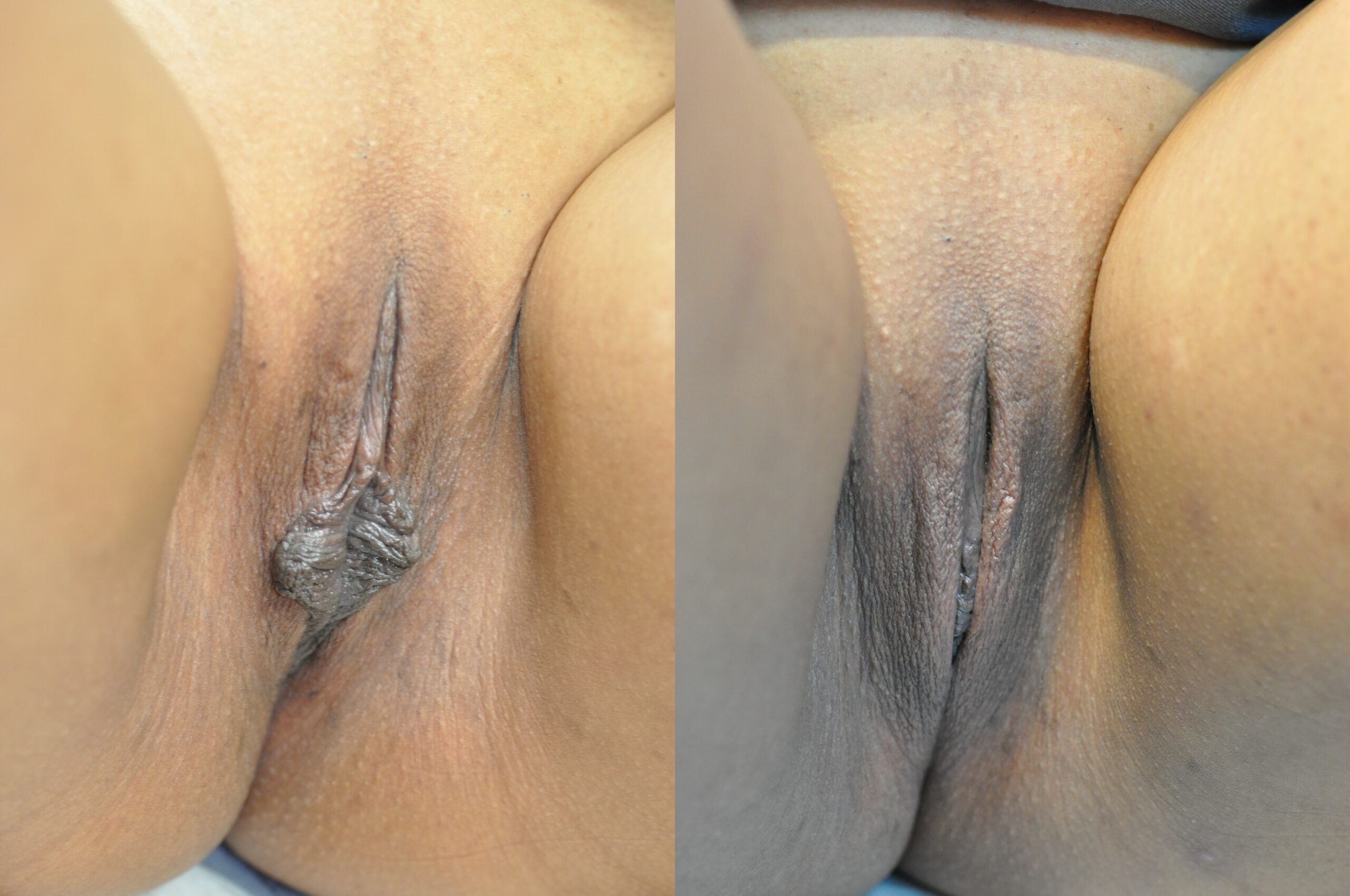INTRODUCTION
A Natural Result
This procedure is undertaken on the labia minora, which are the inner “lips” that are composed of skin on the outside and mucosa on the inside.
The most common cause of enlarged labia (“labia minora”) is simply heredity. Women can be self-conscious about having excessive labial tissue. It can be embarrassing when they wear a bikini or tight-fitting clothing, or when they visit the gynecologist, not to mention intimate relationships. Women do not want to have any noticeable bump or irregularity in the genital area (which is also why I often perform liposuction of the pubic area along with the abdomen). This can be a professional concern for models and actresses.
Sometimes enlarged labia can chafe and cause pain while playing sports, or get in the way during intercourse.
PHOTOS OF PATIENTS WITH LABIAPLASTY
K.H., Age 31
Procedure: Labiaplasty
1 Month
S.S., Age 27
Procedure: Labiaplasty
1 Month
H.D., Age 22
Procedure: Labiaplasty
1 Month
C.S., Age 29
Procedure: Labiaplasty
1 Month
K.S., Age 35
Procedure: Labiaplasty
5 Weeks
Wedge Versus Trim
There are two basic approaches to labiaplasty – the wedge and the trim
Using the wedge technique, the excess labial tissue is resected as a triangle, removing the full thickness of the labia from the middle portion of the labia. The length of the free border is reduced. The edges are carefully sutured together. Asymmetry is common, so it is not unusual for me to remove more tissue on one side than the other. It is important to also repair the inner “stromal” layer of the labia, so as to maximize the strength of the repair. This resection pattern does not place any important nerves at risk so there is no diminished sensation. It preserves the normal anatomy of the free margin of the labia.
A disadvantage of the trim technique is that the free margin of the labia can look a little unnatural. However, it is common for me to combine an element of trim with a wedge labiaplasty to adequately treat any excess labial tissue that might be present on either side of the wedge.
Anesthesia
The surgery may be done under local anesthesia alone or a brief intravenous anesthetic (which most patients choose).
There is typically minimal discomfort. In fact, if there is pain, this needs to be assessed. It could signal a hematoma. The sutures dissolve on their own. This takes up to 2 months. The suture ends are cut short to avoid irritation. Usually urination is not uncomfortable. It is recommended that women avoid intercourse for 5-6 weeks to ensure adequate healing before subjecting the labia to trauma that could cause a disruption of the wound.
The wound tends to heal extremely well, such that the surgical scar is almost invisible. The result is typically very natural, with no stigma of surgery. Patient satisfaction is very high.
Wound Dehiscence
The tissue can be fragile, which is why long-lasting sutures are used. The wound may come apart partially or fully. This is called a “dehiscence.” This problem is not painful, but needs surgical correction to avoid a V-shaped cleft in the labial margin.
Hematoma
The labia have an abundant blood supply. It is important for the surgeon to cauterize the vessels at surgery. Even doing so, it is possible for a clot to separate and a small collection of blood to develop within the labia. This is quite painful. Prompt surgical attention is needed to remove the clot and cauterize the vessel.
Infection
This area is highly resistant to infection, so that this is rarely a problem.
Under/Overresection
As in most operations, underresection is much preferable to over resection. It is easy to remove more labial tissue if needed, but impossible to restore it. With prudent resection, such problems can be avoided.

